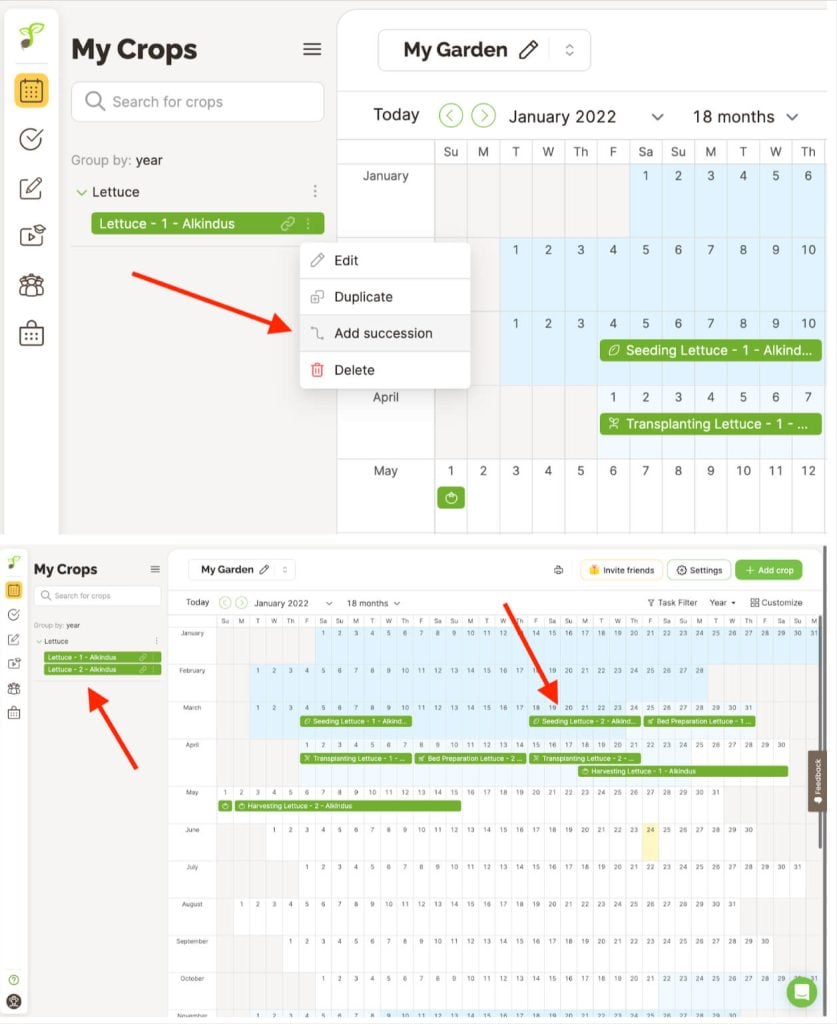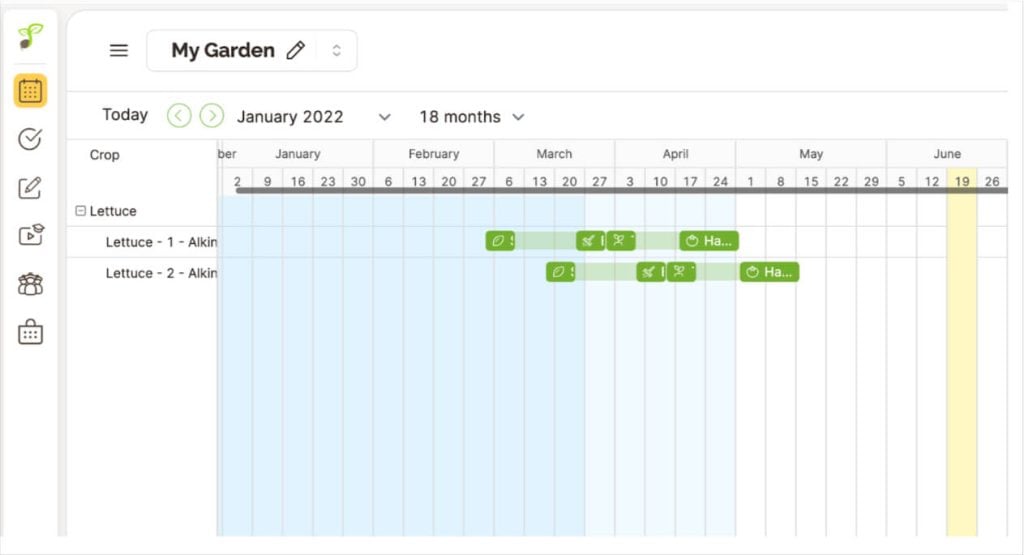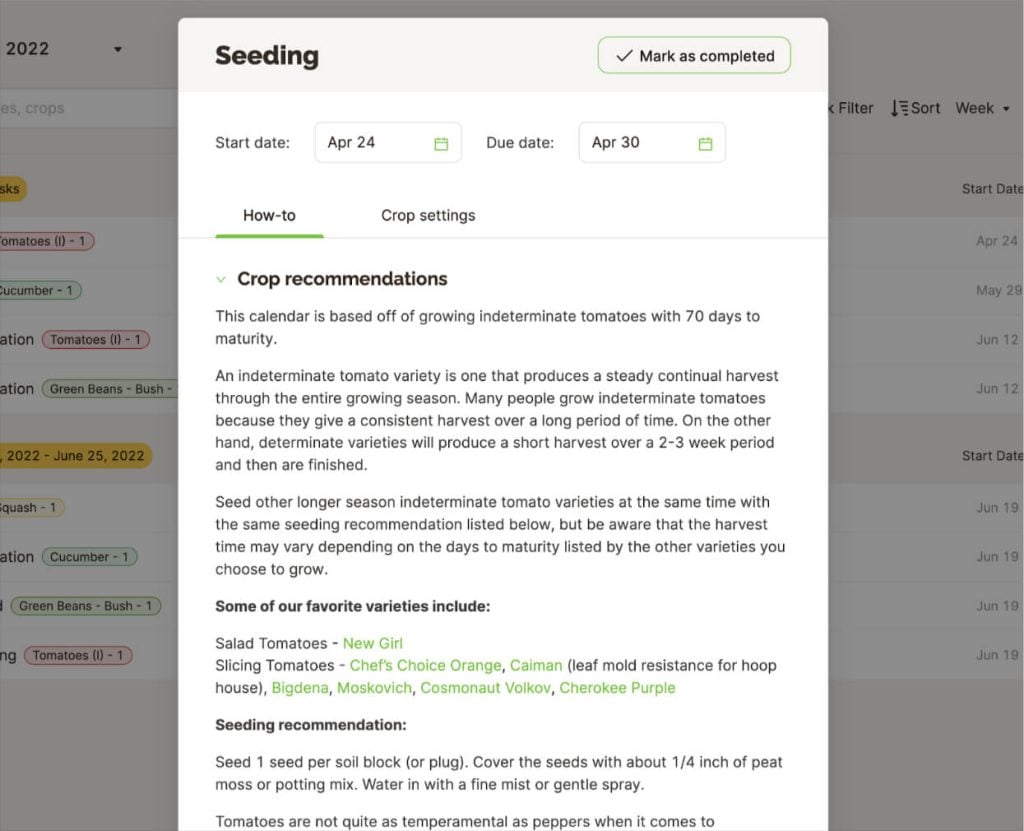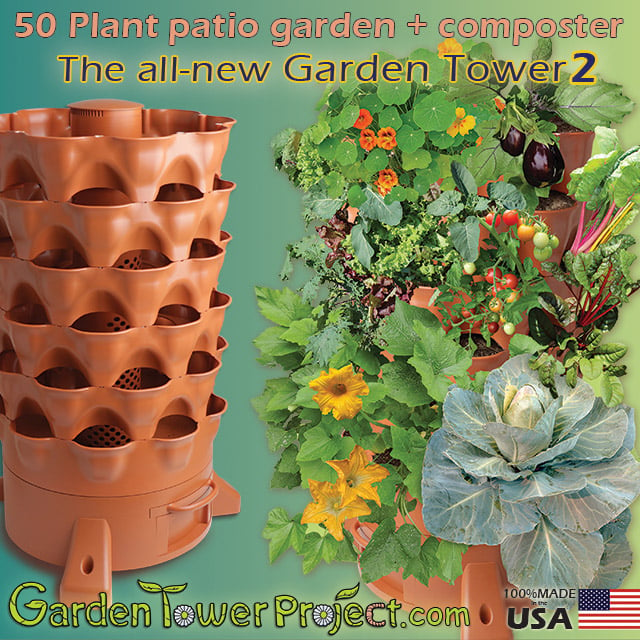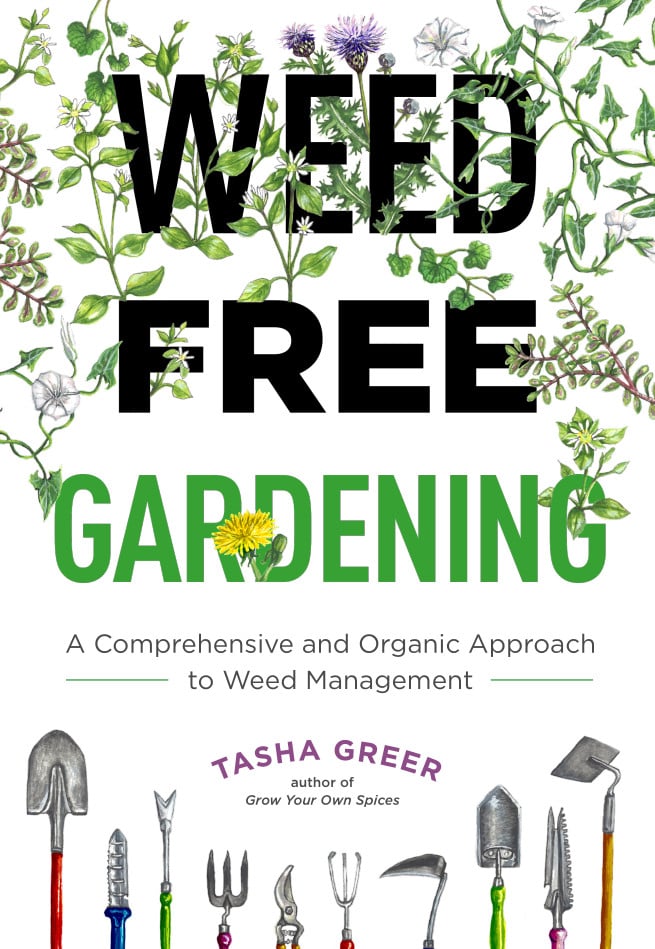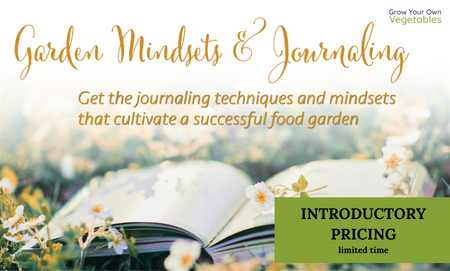The Perpetual Harvest Hack: How to Grow A Continual Harvest of Fresh Food All Year Long Without Losing Your Mind Doing It

Paul Dysinger
Seedtime
Paul Dysinger is the co-founder of Seedtime. Together with his Dad Edwin they design ground breaking garden/farm planning software and teach thousands of people from around the world how to grow their own nutrient dense food at home.
Paul and Edwin, are 2022 Superfood Garden Summit presenters.
“The Superfood Perpetual Harvest Hack”
You know, I could probably start this post out by writing some fancy introduction or story or something…
But something is telling me, how about we jump straight to the chase? What do you think?
You game?
Ok, here goes…
How would you like a perpetual harvest of fresh veggies out of your garden every single week of the year (or greatly extending your growing season)?
I’m talking about fresh lip-smacking tomatoes, cucumbers, and melons during the summer, crunchy leaf lettuce and spinach in the fall, buttery Brussels sprouts with some powerful cabbage salad in the winter, and then back to spring peas, carrots, or beets.

It’s like replacing your grocery store with fresh food directly out of your backyard (think dollar signs!).
Or turning your garden into your living refrigerator.
Does that sound cool or what?!
The problem is… to pull off a perpetual harvest can be a little complex unless you have a good system to do it with.
Let me explain.
Have you ever heard of succession planting? Or I like to call it leapfrog planting.
See, the key with a continual harvest is that you need to always have something growing in the garden – all the time.
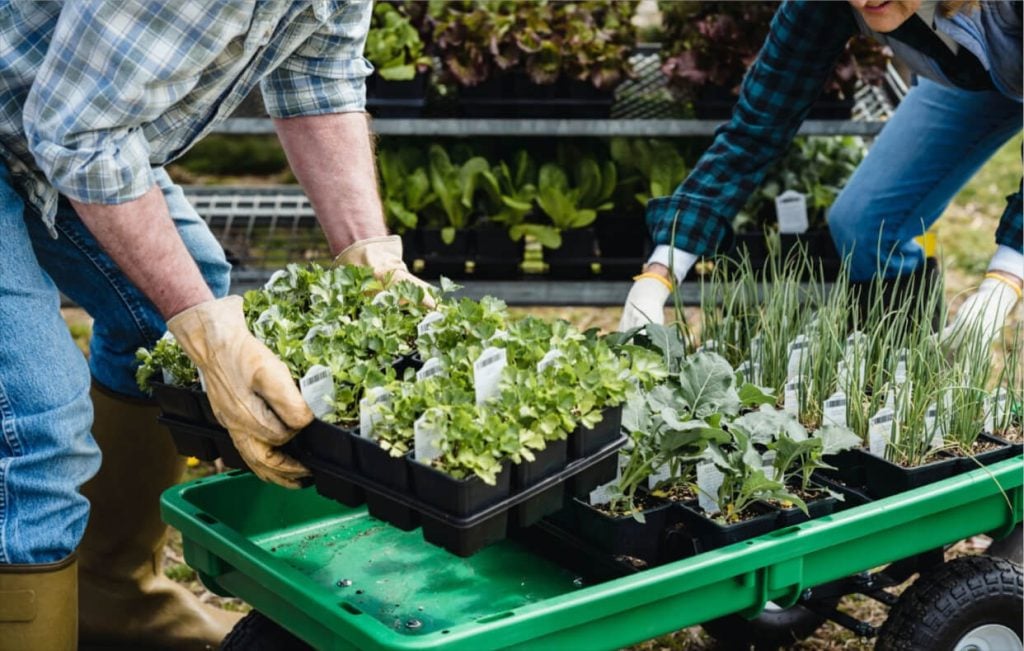
And every plant has its own life cycle.
There’s a time to seed it. It grows. And then it’s harvest time.
Eventually harvest time ends (different for each crop) and the cycle starts over.
This means that if you’re going to effectively plan a continual harvest in your garden you’ll need to understand the following:
- You’ve got to figure out when to plant your first crop
- Then how long before it will be harvested
- How long of a harvest window you can expect from it
- And then when to plant the second “leapfrog” or succession crop so that it is ready to go in when the first crop is harvested so you keep that garden space occupied
- Plus figure out how long in the season each crop can be grown (is it a warm season or cold season crop?)
- And then repeat that for every crop because they are all different
If you think that’s a little complex or overwhelming – you aren’t alone.
In fact, how in the world are you going to keep track of that for 20+ different crops, line them up, arrange them so they stagger after each other, all year long – without going crazy or losing your mind?
Yikes!
The good news is that there is a way. And we call it our Perpetual Harvest Hack.
See, back in the day my Dad Edwin and I made a bit of a rash promise to our gardening students when we told them that we would give them custom weekly checklists of what to do in their gardens based on their current locations.
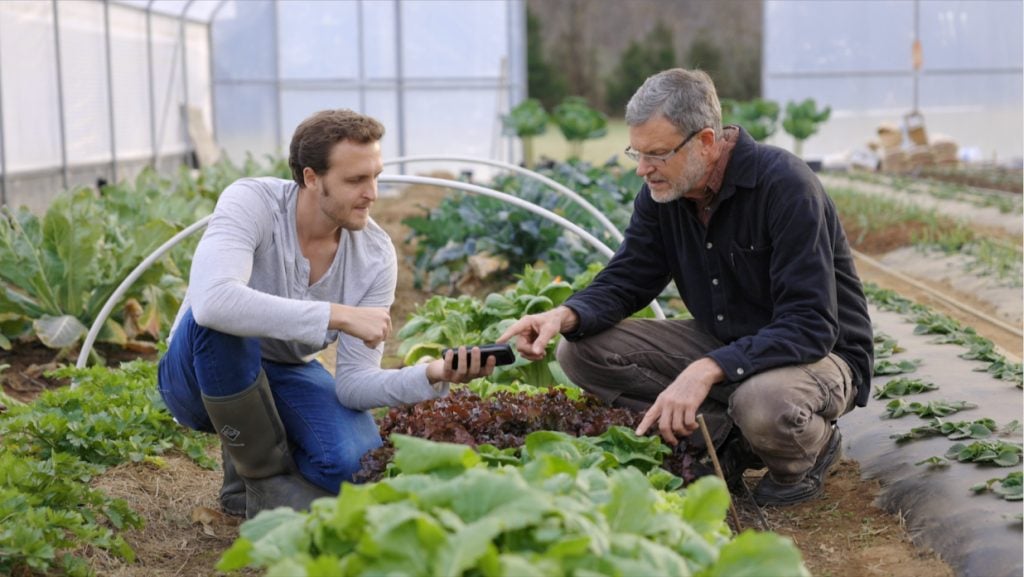
We soon discovered that was a lot bigger of a task than we bargained for and none of the gardening tools we could find really made it much easier.
Granted, there are some tools out there to help know when to seed your crops in the spring or fall, like Johnny’s Seed Starting Calculator (here’s the fall version) or Away to Garden’s Seed Starting Calculator.
In fact, Johnny’s even has a succession planting spreadsheet.
But none of these really made it easy. Let alone automate a way we could give our students weekly checklists of what to do in their areas.
But a promise is a promise. So after intensive research we finally pulled off turning some massive gardening spreadsheets into our first simple Click ’N Drop Gardening Calendars.
And when we first showed them to our students – let’s just say they went crazy…
I’ve never seen gardeners so excited about anything in my entire life.

But the problem was, though our first calendars were one of the best products on the market, they weren’t fully customizable. And while they made planning a year-round garden easy, they were generic.
Our students needed something better. They needed a gardening plan they could personalize.
Which brings us to what we call our “Perpetual Harvest Hack”.
Or in other words we call it – Seedtime.
Seedtime is the first garden planner (that we know of) that makes it extremely easy to visualize exactly when to seed, transplant, and harvest crops in your garden all year long – based on your local area.
Which means when it comes to a continual harvest, there’s finally a way to line up all those plantings without crazy spreadsheets or headaches.
Let’s take lettuce as an example.
If you’re wanting a continual harvest of lettuce, you can quickly and easily drop your first planting into the calendar.
Then with a couple clicks you can drop in a succession planting a couple weeks later.
Throw these onto the timeline view and you can easily get a quick big picture of when each planting is going to be seeded and approximately when you can expect to be harvesting from them.
You can then repeat that process to add more plantings…
Or, if you’re dealing with a specific location in the garden you can change it up a bit.
Let’s say you want your second planting of lettuce to be ready to transplant into the garden when the first one is done harvesting.
Before, you’d have to manually calculate the days to maturity and harvest window, then backtrack about four weeks before the first planting is done harvesting to set the seeding date of your second planting so that it’ll be ready to transplant when the first crop is done.
Wow… that was complicated just trying to type that out.
But now, you can simply click and drag the transplanting task of your second lettuce planting and move it to the week after your first planting should be done harvesting – and everything else will automatically adjust.
Sweet!
That’s the power of click ’n drop garden planning.
And get this, you can do this with literally any crop! In fact, you don’t even have to follow one crop with the same one – you can follow the first crop with a different one.
Let’s take peas and green beans as an example.
Peas like cool weather so it is best to grow them in the spring. And when they are done harvesting, it is often a great time to plant a crop of green beans.
Just line up the seeding times and with a few clicks your schedule is set up.
But it gets even better!
Once you have your garden plantings setup, you can jump over to a weekly or daily task list that automatically compiles from your garden plan.
That’s what we call a game changer.
Now staying on track in your garden is as easy as making a peanut butter and jelly sandwich.
And that’s not to mention the fact that you can click on the tasks in your task list for a quick description of what to do, how to do it, and links to visual demonstration or training videos showing/telling you how to get each task done like a pro.
So if your mind is spinning right now… just know that this is the tip of the iceberg.
There’s a lot more you can do with Seedtime than I can fit into this one blog post.
But the key takeaway here is this:
If you want a continual harvest out of your garden – it just got a whole lot easier.
Your garden matters. Your family matters. Your health matters. And we’re on a mission to make it so much easier for you to focus on the fun parts of gardening without getting bogged down with all the planning/organizing tasks that can be such a chore.
In fact, if you throw in some simple protection methods like a quick hoop with a row cover or two, you can drastically extend your season or grow all year round in many places.
So are you ready to knock it out of the park this season?
Let’s get that perpetual harvest growing so you can replace the grocery store with your garden.
At the time of writing this, Seedtime isn’t open to the public yet. But if you want to get started with your own free account – here’s a special invitation link where we’re inviting Grow Your Own Vegetable readers to get early access:
Get your free Seedtime account here
You’ll get full access to everything for 14 days and then will automatically continue at the Free Forever plan level – or you’ll have the opportunity to upgrade if one of the higher plans fits your needs better.
Here’s to your success and a continual harvest of lip-smacking fresh veggies out of your very own backyard!
Wow! Go check out Seedtime, set up your FREE account, and share your insights here!
![]()
Read and Donate to SAVE THE BEE!
Why Should We SAVE the BEE?
Honey bees are the only insect intricately tied to our food supply. One-third of our diet is currently derived from plants that require pollination, and in the U.S., honey bees are responsible for 80% of agricultural pollination! Without the services of honey bees, there would be no almonds or many of the other healthy fruits and vegetables we take for granted.
The widespread loss of honey bees in the last decade has been linked to pervasive pesticide use, parasites, loss of foraging habitat and poor nutrition. With annual population losses averaging 40% nationwide, action is needed now more than ever.
SAVE the BEE is inspiring positive change to ensure the future of honey bees.
Led by GloryBee, the SAVE the BEE initiative is a partnership of researchers, beekeepers, businesses and consumers committed to protecting honey bee health by:
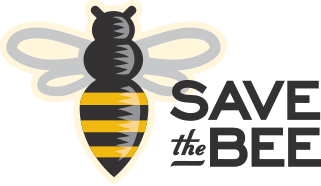
♥ Increasing awareness of the role honey bees play in a healthy food supply
♥ Funding scientific research on the causes of declining bee populations and on solutions to enhance colony health
♥ Providing “best practices” education for farmers, gardeners and beekeepers

We are thrilled to have GloryBee Honey and Save the Bee as a sponsor for the Superfood Garden Summit.
Watch this short video to learn some fun facts about Honey Bees and to learn more about what GloryBee is doing to help SAVE the BEE!
Superfood Garden Summit is happy to have Save the Bee as a Summit Sponsor. Want to help save the bees? DONATE HERE and help support our favorite pollinator!
Share your favorite ‘BEE’ Story! 

Superfood Garden Summit Sponsor: GARDEN TOWER
Indoor gardening for BIG harvests
There’s a tool we want to share that is especially useful if you…
♥ Don’t have a lot of space to plant
♥ You want to have a garden that can grow food year round
You see gardening in a tiny space teaches you a lot… but it can also be challenging!
♥ You never feel like you can grow EVERYTHING you want!
♥ You wonder if your plants are getting enough sunlight, nutrients, or water to get the harvest you saw on the seed packet.
♥ It’s easy to feel a little envious when one of your friends posts a picture of their full, lush garden planted in 4 raised beds in their backyard.
We know all those feelings…
But what we want to show you today solves a LOT of these issues.
It lets you take small-plot growing to a whole new level (and we love it!):
♥ You can grow over 50 different, individual plants and vegetables in just 4 sq. feet! That’s less space than most coat closets.
♥ You can grow indoors or outdoors however you like. Perfect for growing year round in any climate!
♥ This tool lets you vermicompost right inside your garden! No need to move compost around or waste food scraps. Plus all those wonderful vermicompost nutrients end up right in your food!
♥ You’ll be able to use this tool for years to come… it lasts for up to 12 years even in harsh climates.
♥ It’s 100% safe for the environment and your family (no BPA or PVC toxins leaching into your foods)!
So what is this tool we are so excited to show you?
It’s the Garden Tower 2 from our friends over at the Garden Tower Project.
It is actually one of the Grow Your Own Vegetables Team’s favorite gardening products!
Yes, it does look a little strange… but the harvests from your garden tower will definitely make your mouth water! 😋
AND here’s the cherry tomato on top. We talked to the Garden Tower folks and asked if they could get YOU a special deal since you’re a Grow Your Own Vegetables reader… They said YES!
As a sponsor of our Superfood Garden Summit, they’re willing to give you a special discount on your next Garden Tower. Go Here to see their offer.
The Garden Tower Project makes all their garden towers right in the USA. So they are able to keep up with all the people new to gardening!
Part of the reason we like it so much is that it is simple to use. It doesn’t matter if you’re a beginner or an experienced gardener. It’s easy to set up and only takes 6 cu. feet of soil to fill completely. Then you just add water, compost scraps, and worms as needed.
Go check Out Our Favorite Product, The Garden Tower 2
Who knows… maybe you’ll be sharing YOUR huge harvest from your Garden Tower in our Facebook group soon! 🍅🌱🍆🍠
Superfood Garden Summit is happy to have the Garden Tower Project as a Summit Sponsor.
This article contains links to a product that we are a referral partner for. If you click and take action, Grow Your Own Vegetables LLC may be compensated. We only recommend products that we love and that we know can be helpful to you as a gardener.
Have you been enjoying the Superfood Garden Summit? Share your take-a-ways with us!
![]()
Superfood Garden Summit – Get healthy and NOURISH yourself with SUPERCHARGED foods grown right at home
Remember the moment you FIRST ate a fresh-picked tomato and you thought, “Oh my gosh… everyone should know how awesome this is!”??? Well, now’s your chance to spread the love of REALLY fresh, homegrown food. Imagine if YOU were the catalyst for your friends and loved ones to start gardening and enjoying an even GREENer lifestyle… How much could that transform their lives?
There are already over 25,000 attendees for the Superfood Garden Summit. That is AMAZING! Because EVERYONE deserves fresh, organic food for a long, healthy life. Growing your own food is one of the best ways to do just that. 💚 And if everyone brought a friend, we could reach even more growers!
It would mean so much if you could help us connect with more people who need this vital information. Share this link: SuperfoodGardenSummit.com
There are so many problems with our food system. And this is an opportunity to be part of a solution… imagine the impact that this community of superfood growers will have towards an even healthier planet. ;)
Not Registered? Go Here now! SuperfoodGardenSummit.com
Watching the Summit? Share your favorite presentations and takeaways!
![]()
Are Weeds Really ‘Bad’?

Rob Herring
Need to Grow
Rob’s short film aired in the 2022 Superfood Garden Summit
The film is called “We Decided to Become Farmers.”
Rob Herring is an environmental filmmaker and musical activist. He directed/produced/wrote The Need To GROW, winner of multiple Best Documentary awards and seen in 175 countries around the world. Rob worked on the critically acclaimed GMO OMG, and is a Producer on the follow up to the world famous Zeitgeist Trilogy.
As a musician, Rob writes songs for health and eco activism, and headlined the Rock For Nature concert in Berlin for 25,000 people. He is also a Certified Holistic Health Coach and is the co-founder of Integrative Pediatrics.
By: Rob Herring, The NEED to Grow Film
Weeding in your garden?
Maybe you shouldn’t.
Contrary to our decades-long battle against weeds, such as in lawns and in gardens (and especially where I live in America)…
…most weeds are around for a (natural) reason.
No, I’m not saying you should let weeds crowd out and choke your plants! (That’s not good, either).
As with many topics, we want to approach it with nuance as best we can, and recognize that if we allow some weeds to dwell near garden beds or on the lawn, they might provide benefits that get easily overlooked (beyond the obvious beneficial pollinators).
You may be doing a double take right now. How could weeds possibly be beneficial?
Especially plants like dandelion and even (gulp) thistle?
If you’ve got a green thumb, a lawn care passion, a landscaping hobby, or if you only garden from time to time, here are the top benefits of weeds that you need to know…
…so you can spend more time doing the more enjoyable stuff, while letting the wild green things do their beneficial stuff.

Erosion Control
Good advice for gardeners: why kill weeds in your garden, only to leave the soil open and barren?
While gardeners (and farmers, too) can get stuck on having neat, clean, and bare soil come winter— or when their plots are not in use…
…this can cause erosion during hard rains and floods, which makes you lose topsoil, soil life, and amazing nutrients for your plants next year!
Instead of cleaning up, let some of the low-lying weeds hold the soil in place. The root systems are doing Nature’s work underground.
Clumpy weeds like chickweed and ground ivy can be ideal to keep around for this.
Nutrient Availability
Soil compaction is the worst enemy of gardeners and farmers.
That means soil is so pressured and hardened that water and roots have a tough time working their way through.
While sprouting weeds around your young plants can be terrible in some ways, they can be amazing allies against soil compaction on the other hand!
Next time you’re eyeing some weeds and thinking it’s their time to go…
…think twice about if your soil is nutrient deficient, compact, or if there are hard pan issues.
Weeds with very long taproots are amazing at paving the way for next year’s plants, and these include dandelion, sow thistle, and even cockleburs (a.k.a. burdock).
Helpful Cover (and doing the weeding for you!)
Yep: you heard me right— some plants can help you cut down on weeding!
Especially if you struggle with grasses (the bane of gardeners)….
…there are some plants you should keep around, which can help fight and outcompete these peskiest of weeds such as on garden borders, paths, and right in your lawn (if you’re wishing for a more biodiverse lawn, that is).
These weeds accomplish this by having wide, thick leaves that overshadow grasses and lateral roots that spread quickly, easily choke out grasses (both horizontally and vertically) if you encourage them to stick around.
Some great examples are (again) dandelion, red (or white) clover, violets, and purslane (which is also delicious by the way!)
Oh, and of course, that’s another perk too…
….many “weeds” are edible, too (but be careful and make sure you know what you’re considering ingesting, or speak with a qualified herbalist or native plant expert in your region before you go randomly experimenting).
Are Weeds Really ‘Bad’?
We should always remember that the concept of a “weed” is a human idea…
A belief that one plant is more desirable than another, can sometimes come from a short-sighted approach, focused solely on productivity specifically for human consumption or extraction.
Nature thrives from biodiversity and while some plants can be detrimental if not kept in check, it may be helpful to consider the possibility that the certain plants may be serving more important roles in the ecosystem than our human minds can even comprehend.
If they arrived on site, the system may have “called them in”.
There may be a function they are playing, or a ‘role’ they have in the succession of the ecosystem.
Humility is key. We must not pretend we understand the complexity to Nature’s system. We must work with Nature and listen to her as well.
COMMENT!
We’d love to hear from the community:
→ How have you found weeds to sometimes be beneficial?
→ Are there certain plants described as weeds that have helped your garden, farm, or ecosystem at large?
→ Are there certain weeds you’ve used for their nutritional or healing potential?
The #1 Key to Starting Healthy Seedlings

Marjory Wildcraft
The GROW Network
Marjory is a 2022 Superfood Garden Summit Presenter.
“How to have FREE breakfast for life!”
Marjory Wildcraft is the founder of The Grow Network, which is a community of people focused on modern self-sufficient living. She has been featured by National Geographic as an expert in off-grid living, she hosted the Mother Earth News Online Homesteading Summit, and she is listed in Who’s Who in America for having inspired hundreds of thousands of backyard gardens.
Marjory was the focus of an article that won Reuter’s Food Sustainability Media Award, and she recently authored The Grow System: The Essential Guide to Modern Self-Sufficient Living—From Growing Food to Making Medicine.
By: Marjory Wildcraft, The GROW Network
In my experience, the vast majority of problems people have when trying to grow plants from seed stem from insufficient light. A strong, reliable light source is not a luxury when you’re starting healthy seedlings—it’s an absolute must. You can compromise on many other aspects of gardening, but don’t cheat your green babies on the one thing they need most.
If you have a greenhouse, choose the brightest spot for your new seedlings. If you’ve been setting your seed trays on a windowsill, re-evaluate that choice. Remember: weak light = weak seedlings.
If you want husky, healthy seedlings, don’t gamble on the fickle winter sun filtered through a window.
Control the light, and you control the outcome!
Choosing the Right Grow Lights
Setting up a grow light today is easy and inexpensive, and it doesn’t take up much room. Bulky shop lights and fiendishly hot tungsten bulbs are fading into history.
Existing Shelf Space
If you have some empty space on a bookshelf or an empty shelf in a kitchen cabinet, you can easily install a couple of tiny T-5 light fixtures. There are also several LED offerings on the market. LED grow lights are powerful and super-efficient, and they generate very little heat.
Simply attach a light or two to the bottom of one shelf to light the shelf underneath it where your tray will sit.
If the shelf is adjustable, you are all set. If not, the tray can be elevated when the seedlings are started, to bring the surface of the soil within two or three inches of the light. That’s right! The light will be very close to the seeds.
Tabletop Light Stands
If you have room to start seeds on a countertop or a table, there are several tabletop light stands that are designed for the space. The typical design is a simple metal stand that holds the light, suspended by an adjustable string or chain.
Tabletop lights are small and easy to use, and they are available in a range of sizes.
Grow Light Stands
The next size up is the shelf model. These resemble a regular set of utility shelves, with a grow light suspended from the bottom of every shelf. These lights offer enough space and power to grow starts for the whole neighborhood!
These shelf units aren’t cheap, but they are very useful. In addition to starting seeds, they can be used to overwinter plants indoors, and even to grow summer veggies and herbs all winter long.
Strong Light = Strong Seedlings
If the seedlings you’ve grown in the past haven’t been the strong, stout, deep-green variety every gardener hopes for, it’s likely that they haven’t gotten enough light as they’ve grown.
Fix that one thing, and you’re much more likely to say “goodbye” to weak, leggy, pale seedlings—and hello to starts that grow into strong, healthy plants!
Share your seed starting success stories with us!
![]()
Light Deprivation for Weed Control

Tasha Greer
Simple, Epicurean Homestead Living
Tasha is a 2022 Superfood Garden Summit presenter.
Weeds are Superfoods Too (for you & your garden!)
Tasha Greer is an Epicurean homesteader and writer focused on simple, sustainable living. She’s the author of Weed-Free Gardening and Grow Your Own Spices. She gardens in Surry County, North Carolina on about 1.5 acres and grows a large variety of annual and perennial edible, medicinal, and ecosystem support plants.
Additionally, she has a large greenhouse for year-round gardening and exotic edibles. Tasha also keeps ducks, dairy goats, chickens, a pet turkey, worms, and (occasionally) pigs to help with landscaping projects and manage soil fertility. She also teaches classes related to growing food, edible landscaping, and organic
Light deprivation is great low-to-no cost way to control some weeds in your garden. It’s done by covering an area with black plastic sheeting, landscape fabric, scrap sheet metal, a tarp, old carpet, or other kinds of light barriers for a few months. Alternatively, you can use carbon rich materials like paper and cardboard held in place with heavy objects or covered with mulch.
The idea is that if the weeds underneath the cover can’t access sunlight, they can’t photosynthesize. If they can’t photosynthesize, they can’t do the necessary maintenance to keep their roots, stems, and leaves in good working order. Over time, overall plant health will start to decline. In that weakened state, insects and soil microlife will begin to nibble on those weeds until they eventually die.
It’s a little gruesome to imagine in detail. But the method is really effective on fast-growing weeds with fibrous root systems or rot prone crowns. Unfortunately, there are also many weeds that can wait out short-term light sieges.
Light Seige Resistant Weeds
Here are a few examples of weeds that can’t be easily killed with light deprivation.
• Herbaceous perennial weeds with the capacity to go dormant (e.g., cold hardy or drought hardy plants) can use their dormancy aptitudes to survive without light for more than 6 months.
• Weeds with deep storage roots or tubers can survive a light siege by continuing to do critical maintenance using those nutrients stored in their underground plant parts for years.
• Weeds that spread quickly by rhizomes can extend beyond light blocking barriers and continue to feed the root systems underneath the light blocking barrier indefinitely.
For these light-seige adapted survival weeds, targeted digging or repeat mowing to weaken root systems, followed by long-term light deprivation are necessary.
Weed Seed Light Blocking
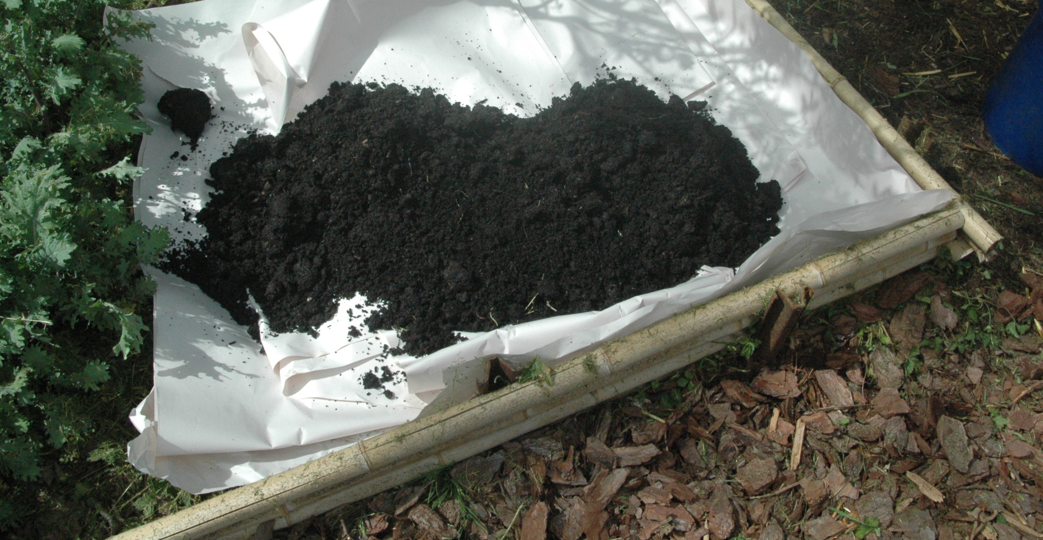
Light deprivation is also used to prevent certain weed seeds from germinating. This is normally done by applying a few sheets of paper followed by several inches of compost, garden soil, or other mulches to bury weed seeds.
This method is really effective against seeds that require light or that germinate only at shallow planting depths. It won’t prevent deep-germinating seeds from starting. However, by increasing the soil depth they have to grow up through, those weeds will be weaker when they emerge. Then, you can cover them with a big rock or repeat mow them down to finish the job.
Solarization vs. Light Deprivation
Just one cautionary note: Be careful not to confuse light deprivation with solarization.
Solarization is an in-ground method of pasteurizing your soil used only to treat severe cases of fungal pathogens. It’s done over a long period of time, including the warmest months of the year, using tightly applied clear or black plastic that scorches the soil. Solarizing is detrimental to soil life and often causes enormous amounts of weeds within a few months of removing the plastic sheeting.
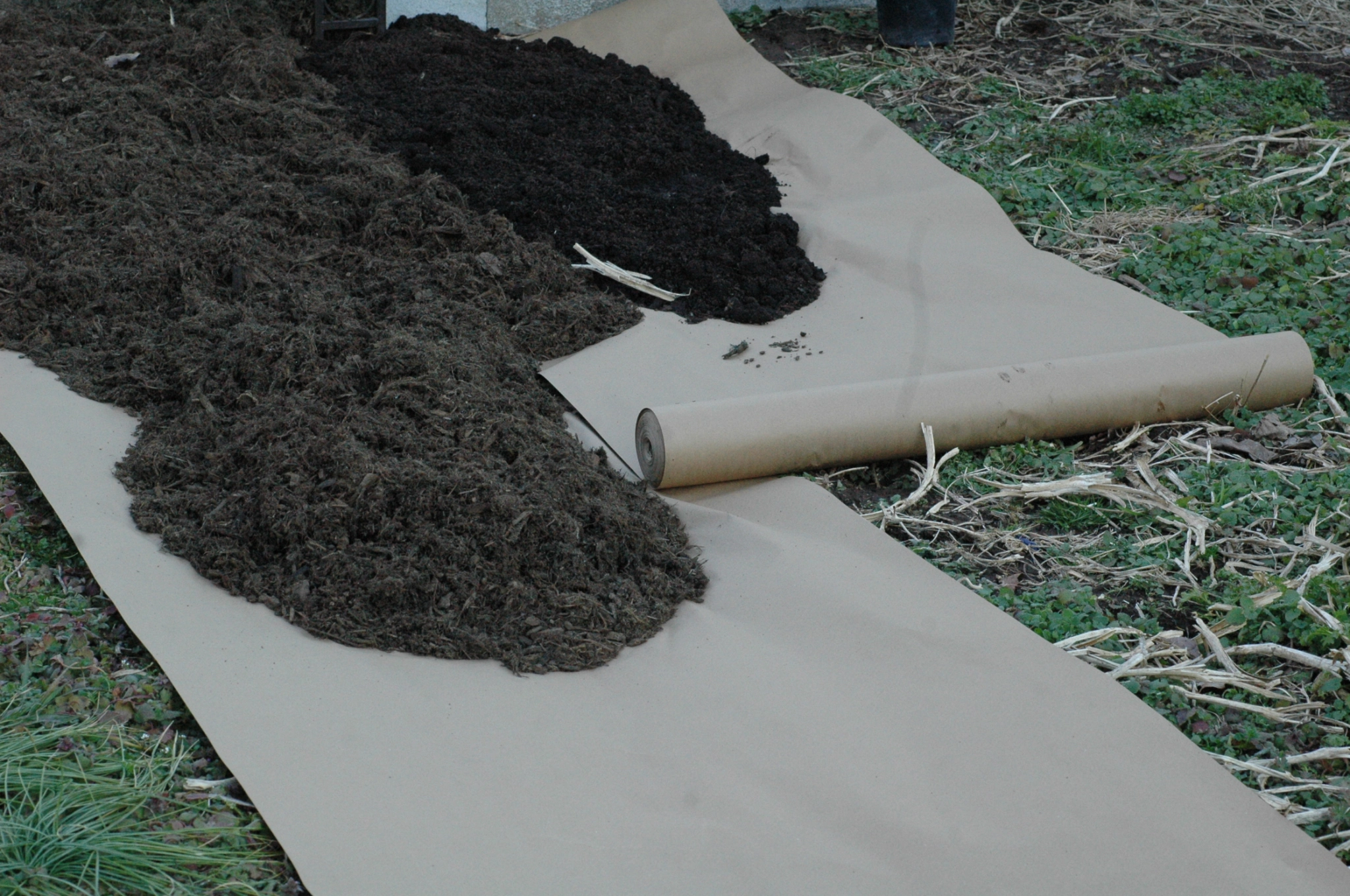
Light deprivation, by contrast, should not interrupt the airflow to soil or cause the soil to heat up. The soil below should also be kept moist so it doesn’t overheat in dry hot weather.
Light deprivation kills plants while beneficial insects and microlife in the soil remain unharmed. In some cases, light deprivation even increases soil life populations as they feast on the dying plants.
Weed-Free Gardening
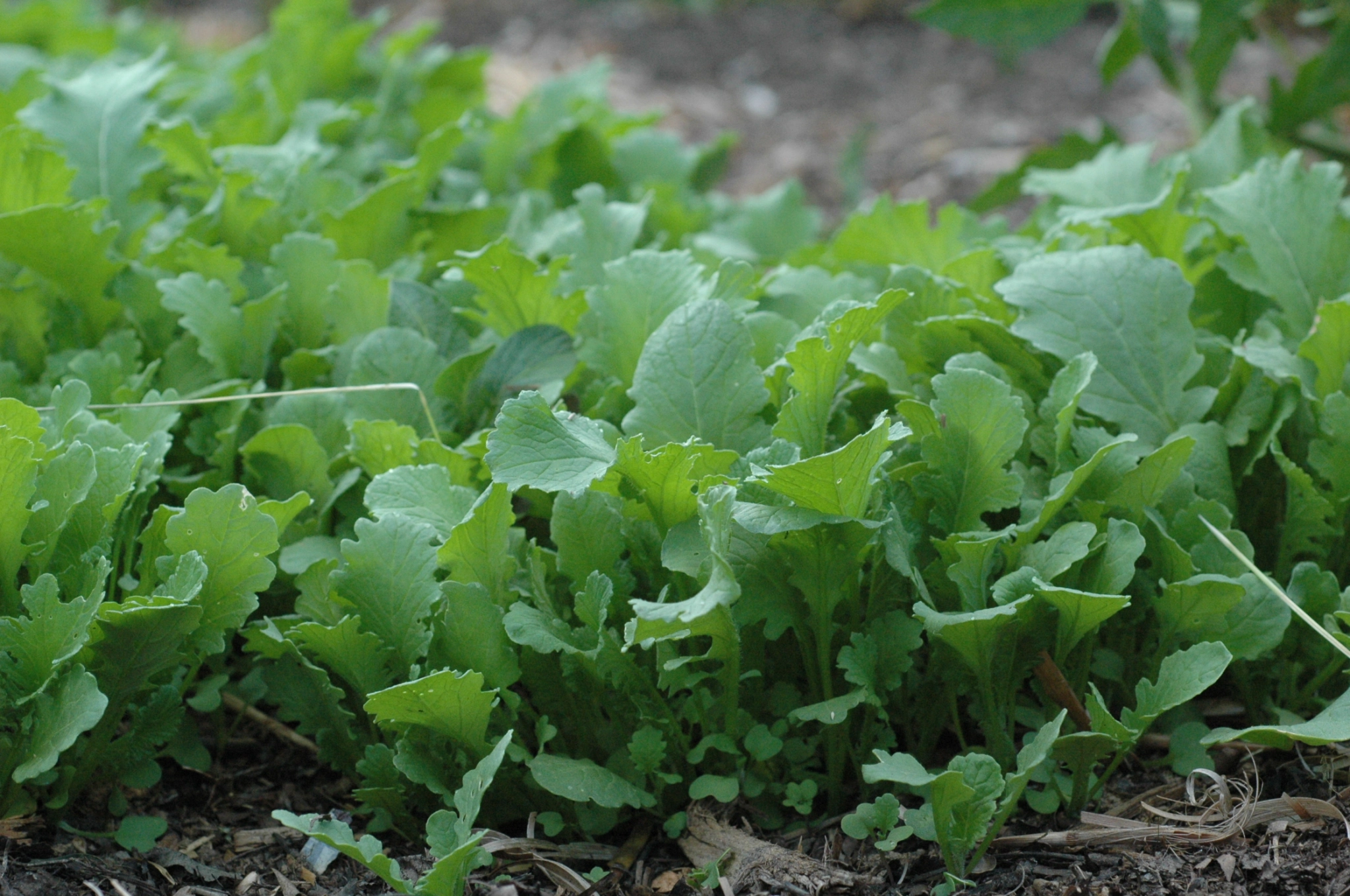
For more weed-free tips and tidbits, check back weekly or sign up for email notifications of new posts. Also, if you want lots more Weed-Free Gardening information at your fingertips, consider buying a copy of my book.
Please share any tips you have for successful organic weed control.
![]()
Productivity Tips on How to Lay Out a Garden

Jason Matyas
Seeds for Generations
Jason is a 2022 Superfood Garden Summit presenter.
“Starting Seeds & Caring for Seedlings”
Jason Matyas is a husband, father of seven, homesteader, lifelong gardener, 20-year Air Force veteran with 9 worldwide deployments including two tours in Afghanistan, and visionary entrepreneur and public speaker. He is the founder of a family business with his children called Seeds for Generations that provides heirloom garden seeds and inspiration for gardening as a family. Jason is also the Executive Producer of the documentary film Beyond Off Grid, and founder of the Return to the Old Paths project devoted to inspiring and equipping you to reduce your dependence on the modern economy and seek true freedom by Returning to the Old Paths of productive households and local community interdependence.
In previous posts (see entire blog series here), we’ve already discussed the most important planning considerations for your garden, but there are a few other considerations that you may find helpful as you’re finalizing your plot. Keep these things in mind while considering how to lay out a garden.

Considering Garden Size
In an earlier post (see entire blog series here), we touched on garden size (i.e., available space), but it’s worth repeating here. The size of your garden is determined by which growing method you use. There are many different methods, but the most basic methods are row gardening, square foot gardening (popularized by Mel Bartholomew), and container gardening. You can also use vertical growing methods, which are great for small spaces.
Regardless, you’ll want to maximize your planting area by placing paths only where absolutely necessary. Generally, you don’t want more than four or five feet between your paths, because most people can only reach two and a half feet, so keep this in mind.
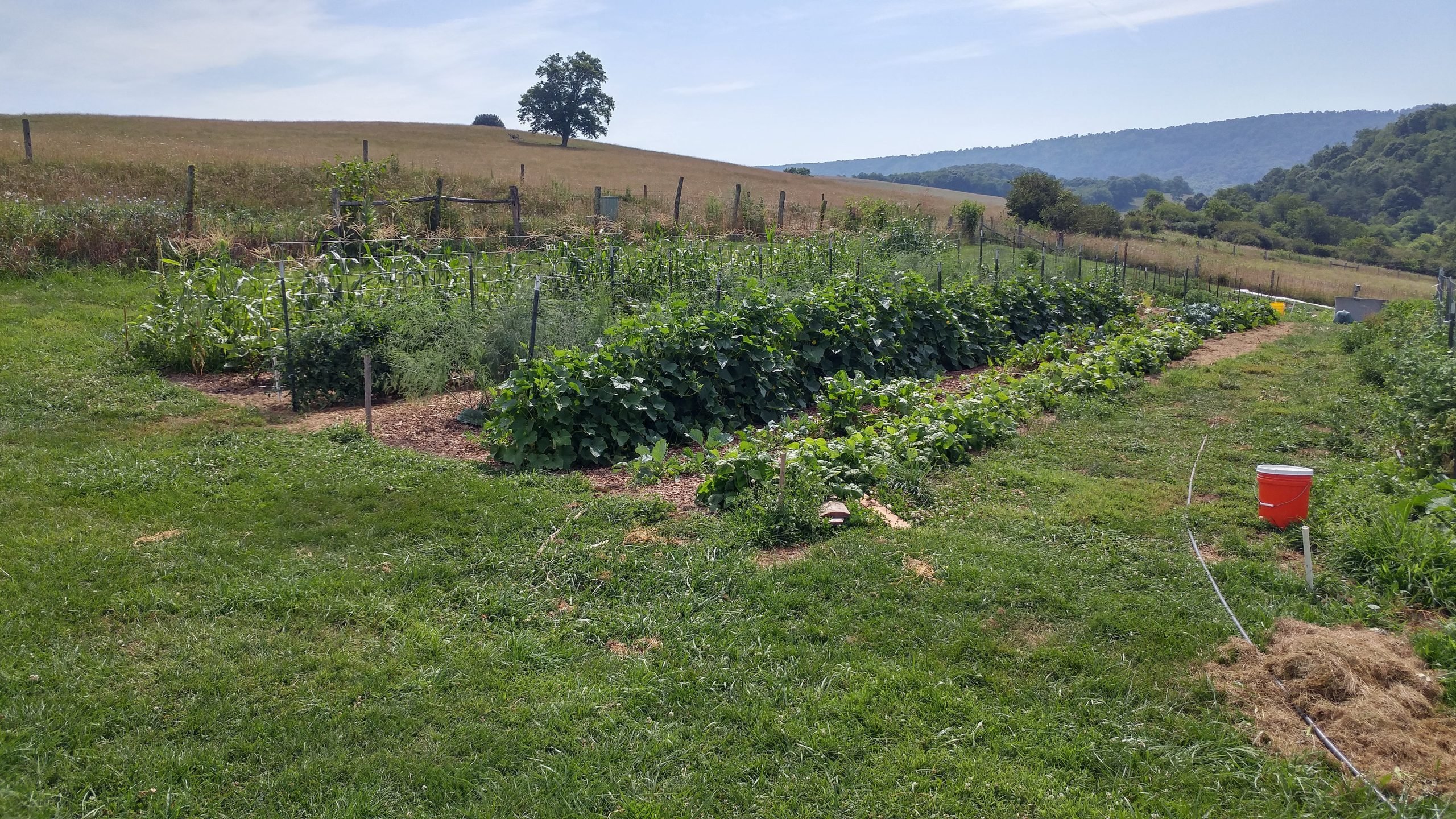
Laying Out Your Garden
Once again, your layout entirely depends several factors, including sunlight. Like we mentioned previously (see entire blog series here), you’ll want to orient your plot towards the south to get the maximum sunshine potential, which will help plants grow better. If you’re growing plants that may struggle in a lot of direct sun and heat or bolt (i.e., go to seed) in hot conditions, consider planting those varieties where they’ll be protected from afternoon sun.

Positioning Crops in Your Garden
How you position crops together may impact their productivity, so consider using companion planting techniques to create synergy and play off of natural relationships between different plants. Plants like basil and tomatoes grow well together, for example.
In addition, sometimes you can plant two different crops in one space during the same growing season, such as lettuce with cabbage. If you do this, you will have harvested the lettuce before the cabbage grows completely into its space. If you don’t know how many days the plant takes to grow to maturity, check the seed packet–that information should be listed there.
Also, while planting, ensure that you have adequate access for harvesting later. If you don’t harvest winter squash or corn until late in the year, for example, you usually don’t need to make it very accessible during the spring and summer. But tomatoes and cucumbers that will need picked every other day? You’ll need to access them easily, without crushing other plants.
Productivity Tips on How to Lay Out a Garden – Conclusion
Garden size, garden layout, and garden plant positioning. That’s all you really need to know when it comes to learning how to lay out a garden. Now get planting!
Gifts from Jason at Seeds for Generations!
→ Free Garden Planning Calculator (for calculating planting dates)
→ Free Companion Planting Matrix (for making companion planting decisions)
Eat the Rainbow: Why Is it Important to Eat a Colorful Variety of Fruits and Vegetables?

Ocean Robbins
Food Revolution Network
Ocean is presenting at the 2022 Superfood Garden Summit airing June 22-25 2022.
He will be sharing about superfoods that are super easy and fun to grow. Be sure to register here:
Ocean Robbins is co-founder & CEO of the 700,000 member Food Revolution Network. He is author of the bestseller, 31-Day Food Revolution: Heal Your Body, Feel Great, and Transform Your World. Ocean founded Youth for Environmental Sanity (YES!) at age 16, and directed it for the next 20 years. He has spoken in person to more than 200,000 people, organized online seminars and events reaching more than a million, and facilitated leadership development events for leaders from 65 nations. He has served as adjunct professor for Chapman University, and is a recipient of the national Jefferson Award for Outstanding Public Service, the Freedom’s Flame Award, the Harmon Wilkinson Award, and many other honors.
SUMMARY
Research has shown that a colorful diet is a great way to boost your health and vitality. But how can you be sure that you’re getting all the vitamins, minerals, and nutrients that your body needs to thrive? In this article, we’ll look at the whole spectrum of rainbow nutrition to show how adding color to your plate could add years to your life (and life to your years!). There’s also a shareable rainbow foods infographic that can help you choose a diversity of colorful fruits and vegetables.
“Eat the rainbow” is a fundamental healthy eating tip. (And no, we don’t mean artificially colored foods like Skittles or M&Ms!)
But what does it mean? Why is it important to get a variety of colorful fruits and vegetables in your diet?
You may be tempted to find a few foods you or your kids or family members like and focus on eating those. And it can be easy to fall into routines. But the truth is: Our bodies thrive on variety — a rainbow of nutrients.
In fact, the variety of vitamins, minerals, antioxidants, and phytochemicals in fruits and vegetables may be more powerful for your health than any pill.
Eating a diversity of colorful foods can be an easy way to get the complete range of nutrients your body needs to thrive.
Eating the Rainbow Is Important for Everyone — Kids and Adults!
A varied, balanced diet gives your body the nutrition it needs to work properly. And without good nutrition, your body will be more likely to suffer from disease, illness, and poor performance.
Advice to eat the rainbow is often used with kids. And while kids especially need a diversity of foods in their diets, so do adults.
Why Are Fruits and Vegetables Full of so Many Colors?
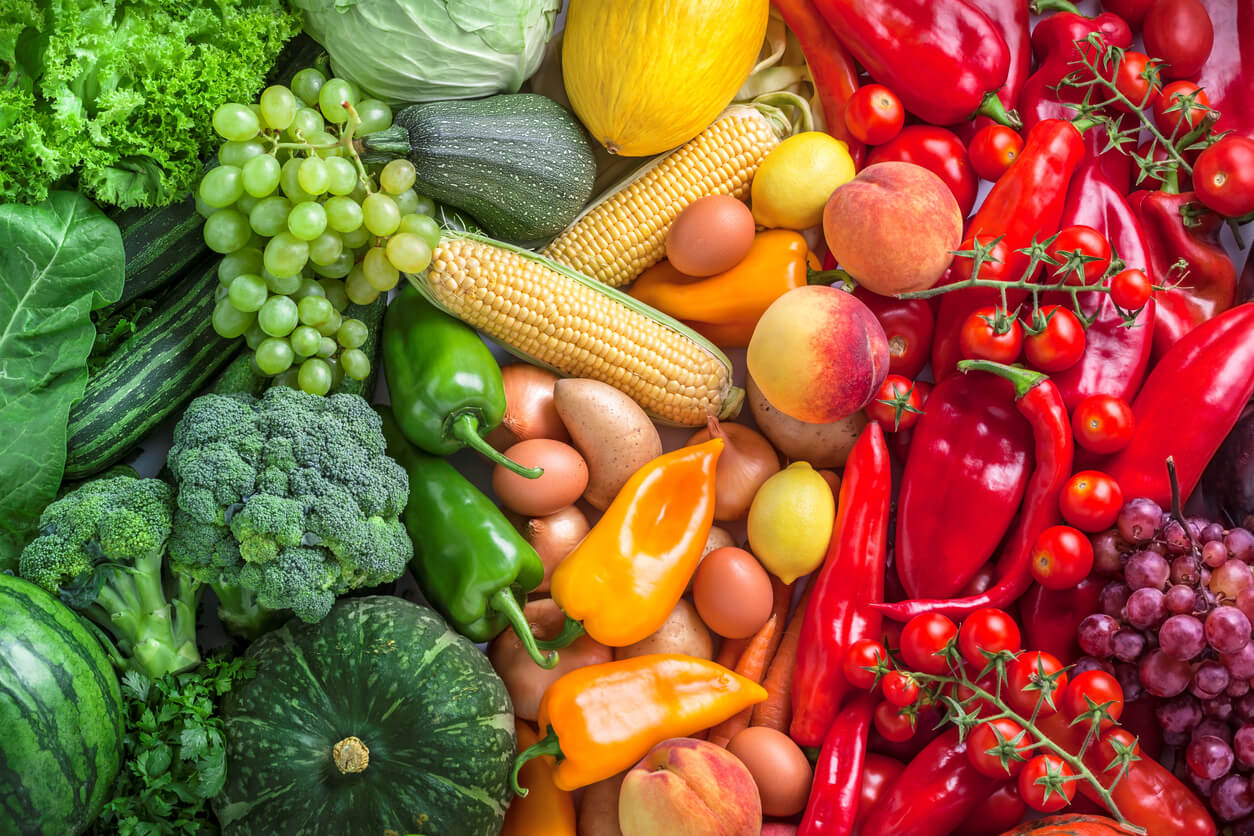
Each color in fruits and vegetables is created by specific phytonutrients, which are natural compounds that help protect plants from germs, bugs, the sun, and other threats.
And each color indicates an abundance of specific nutrients.
Phytonutrients aren’t essential to keep you alive (unlike vitamins and minerals). But they may help prevent certain lifestyle diseases and keep your body working as it should.
Most Americans Aren’t Getting the Range of Colorful Foods They Need
A 2015 Morbidity and Mortality Weekly Report from the CDC states that “the percentage of the adult population meeting fruit and vegetable intake recommendation is low. In 2013, 13.1% of respondents met fruit intake recommendations and 8.9% met vegetable recommendations.”
And, according to an older 2009 report about phytonutrients, 8 out of 10 people in the US are falling short in virtually every color category of phytonutrients.
Based on the report:
• 69% of Americans are falling short in green phytonutrients
• 78% of Americans are falling short in red phytonutrients
• 86% of Americans are falling short in white phytonutrients
• 88% of Americans are falling short in purple and blue phytonutrients
• 79% of Americans are falling short in yellow and orange phytonutrients
Now, let’s take a look at what the color of your food can tell you about its nutrition. And how you can get more of a colorful range of phytonutrients to help your body function at its best. After exploring all the different colors and their corresponding foods and phytochemicals, stick around for a helpful rainbow food chart that you can share or print at home.
Healthy Red Foods Help Fight Cancer, Reduce the Risk of Diabetes and Heart Disease, Improve Skin Quality, and More

Red fruits and vegetables contain phytochemicals including lycopene and ellagic acid. These powerful nutrients have been studied for their cancer-fighting effects and other health benefits.
For example, regular consumption of tomatoes and tomato products (like cooked tomatoes and tomato sauce) has been shown to reduce the risk for prostate cancer. Watermelon is even higher in lycopene than tomatoes, and the lycopene may be more bioavailable, too.
Watermelon is also rich in a phytonutrient called citrulline, which may work as a treatment for mild to moderate erectile dysfunction.
And red vegetables, like beets, have been shown to affect the nitric oxide pathway, helping blood vessels dilate. This improves circulation and helps reduce the risk of heart disease.
Also, strawberries have been found to prevent and even reverse the progression of esophageal cancer. Berries, in general, are rich in bioactive compounds that protect against chronic diseases like heart disease and Alzheimer’s.
Getting your phytonutrients from whole foods is best. In fact, some studies show that taking phytonutrients, like lycopene and beta-carotene, in supplement form may actually increase the risk of cancer. But consuming these phytonutrients in whole food form, like tomato sauce, may help decrease the risk of cancer.
There’s plenty of evidence that eating an abundance of colorful fruits and vegetables offers protective effects for heart health, and may even help lengthen your lifespan.
Your skin benefits from eating red foods, too. The polyphenols and antioxidants in red fruits and veggies may help prevent skin cancer and offer skin protection against damaging effects from sunlight, excessive inflammation, and wounds.
Examples of Healthy Red Foods to Try
• Red peppers
• Tomatoes
• Strawberries
• Raspberries
• Watermelon
• Apples
• Cranberries
• Kidney beans
• Cherries
• Grapes
• Red onions
• Pomegranate
• Beets
Yellow and Orange Fruits and Vegetables Improve Immune Function, Reduce the Risk of Heart Disease, Promote Eye Health, and More

Orange and yellow fruits and vegetables are rich in vitamin C and carotenoids, including beta-carotene. Some carotenoids, most notably beta-carotene, convert to vitamin A within the body, which helps promote healthy vision and cell growth.
Citrus fruits, like oranges, contain a unique phytonutrient called hesperidin, which helps to increase blood flow. This has important health ramifications. If you tend to get cold hands and feet, eating an orange a day may help to keep your hands and feet warm. Even more importantly, consuming citrus may also reduce your risk of stroke.
Two of the most notable carotenoids in orange and yellow foods are lutein and zeaxanthin. These fat-soluble antioxidants have been heavily studied for their ability to help protect the health of your eyes. In fact, they accumulate in the retina of your eyes, where they help prevent cataracts and diseases like age-related macular degeneration — the leading cause of blindness around the world. They also protect your eyes from damage caused by blue light emitted from phone, computer, and television screens.
Examples of Healthy Orange and Yellow Foods to Try
• Oranges
• Grapefruit
• Lemons
• Mangoes
• Papayas
• Carrots
• Sweet potatoes
• Winter squash (butternut, kabocha, delicata, acorn)
• Yellow summer squash
• Corn
• Cantaloupe
• Orange and yellow peppers
• Golden beets
• Pineapple
• Peaches
• Bananas
Green Fruits and Vegetables Boost the Immune System, Help Detoxify the Body, Restore Energy and Vitality, and More

Greens are some of the healthiest foods we can eat. Green fruits and vegetables are rich in lutein, isothiocyanates, isoflavones, and vitamin K — which is essential for blood and bone health.
Green vegetables are also rich in folate — a nutrient especially important for pregnant women to consume to help prevent congenital disabilities.
Cruciferous vegetables, like broccoli and cabbage, have been shown to enhance immune function, while dark leafy greens like kale may improve mood.
Research has even shown that eating leafy greens is associated with a slower rate of cognitive decline. One study among 960 participants aged 58–99 years old found that those who consumed at least 1.3 servings per day of leafy greens for nearly five years experienced cognitive improvement likened to being 11 years younger in age, compared to those who consumed fewer greens.
Greens are also a highly bioavailable source of calcium and vitamin K1, which have a positive impact on bone metabolism.
And kiwi fruit has been shown to help alleviate a wide array of maladies, from the common cold to IBS to insomnia, and it may even help repair DNA damage.
Examples of Healthy Green Foods to Try
• Broccoli
• Kale
• Romaine lettuce
• Collard greens
• Brussels sprouts
• Green cabbage
• Green grapes
• Asparagus
• Spinach
• Swiss chard
• Arugula
• Green beans
• Peas
• Zucchini
• Kiwi fruit
• Avocado
• Green apples
• Edamame
Purple and Blue Fruits and Vegetables May Reduce the Risk of Cancer and Heart Disease, Support Cognition, Decrease Inflammation, and Improve Skin Health

Blue and purple fruits and vegetables are rich in anthocyanins and resveratrol and have been studied extensively for their anticancer and antiaging properties.
Studies show that the bioactive phytochemicals in berries work to repair damage from oxidative stress and inflammation.
The anthocyanins in blueberries and red grapes may help reduce the risk for heart disease, cognitive decline, and type 2 diabetes, as well as support healthy weight maintenance and a normal inflammatory response.
Red grapes are also full of polyphenol compounds and antioxidants. One of these is resveratrol, which has been associated with increased nitric oxide production and better heart health outcomes.
And red cabbage, which is really more of a purple color, is one of the best superfood bargains and has the highest level of antioxidants per dollar.
Blue and Purple Fruits and Veggies to Try
• Blueberries
• Blackberries
• Red (purple) grapes
• Red (purple) cabbage
• Plums
• Prunes
• Red (purple) onions
• Eggplant
• Purple potatoes and sweet potatoes
• Purple cauliflower
• Figs
• Raisins
Brown and White Colored Foods Protect Against Certain Cancers, Keep Bones Strong, and Are a Heart-Healthy Choice

Though they aren’t as brightly colored as other foods, white and brown produce are still great healthy choices.
Like broccoli, cauliflower is a cruciferous vegetable rich in an anticancer compound called sulforaphane.
Garlic and onions are in the allium family of vegetables and contain the powerful health-promoting compounds allicin and quercetin. Aged garlic has been shown to have anti-inflammatory, immune-boosting, and anti-allergic effects, even more so than raw garlic.
And phytonutrients in white button mushrooms have been found to inhibit aromatase activity and breast cancer cell proliferation. This common mushroom variety also has antimicrobial activity.
Healthy White and Brown Fruits and Veggies List
• Cauliflower
• Garlic
• Onions
• Mushrooms
• Potatoes
• Parsnips
• Daikon radish
• Jicama
A Visual List of Phytochemicals
Whew! That’s a lot of colorful foods and nutrients to remember. Luckily, we’ve made it easier than ever to get a healthy dose of antioxidants with this rainbow chart of nutrients. In this nutritional infographic, you’ll see what color foods correspond to what phytochemicals, so you can create beautiful and health-fulfilling rainbow meals.

Tips to Help You Eat the Rainbow Every Day

Now you hopefully see why eating a variety of colorful foods is good for your health. But how do you make that happen? Here are some tips you can use when creating your meals:
• Eat a beautiful breakfast. Instead of drab bagels, eggs, or yogurt, start your day with a green smoothie, oatmeal topped with red berries, or a tofu scramble filled with red peppers, mushrooms, carrots, or other colorful veggies.
• Enjoy exciting salads. Large, colorful salads topped with beans and a diverse selection of vegetables are the perfect way to incorporate lots of colorful veggies (and fruits!) into your diet. Eat them for lunch or dinner. And try to have at least one per day.
• Liven up your lunch. Veggie sandwiches and wraps (including lettuce wraps) and soups, stews, and chili can help you get a balanced selection of colorful foods for lunch.
• Make vegetables the main dish. Try new recipes for dishes, such as tempeh vegetable stir-fries, vegetable curries, and Buddha bowls.
• Make a rainbow meal. Try creating a meal that uses every color — red, orange, yellow, green, blue, purple, white, and brown. (If you have kids, they will love this idea.)
Recipe Ideas to Inspire You to Add Color and Variety to Your Meals
Below are several colorful recipes to help you eat the rainbow. In fact, each one of the recipes below includes at least five colors from the rainbow!
Try the Garden Breakfast Wrap for a nourishing savory meal to start your day. Get a burst of flavor with each bite when you enjoy the Rainbow Salad with Carrot Ginger Dressing, which is YUMMY! Let the Quinoa, Bean, and Vegetable Soup (any veggies you have on hand go well here!) comfort and satisfy you. And experience a meal that’s almost too pretty to eat when you make (and eat!) the Thai Peanut Rainbow Noodles. Then blend colorful fruits, veggies, and seeds together to create the beautiful Autumn Sunrise Smoothie (yes, indeed, it looks like a stunning sunrise!). Share your colorful, culinary experience with us!
• Garden Breakfast Wrap: One of the beautiful things about this wrap is that you can use any veggies from your fridge or growing from your garden to make it your own. Beginning the day with leafy greens, like kale, collards, or romaine, is the perfect way to jump-start your morning with nutrition. Once you spread the hummus on your green wrap, start adding your favorite veggies — and get ready for some creamy crunch to stimulate your palate and a variety of nutrients to energize your body!
• Rainbow Salad with Carrot Ginger Dressing: One way to uplevel just about any meal is to add a delicious and nutritious plant-based dressing or sauce. Carrot Ginger Dressing is bursting with flavor while adding healing carotenoids from the carrots, gingerol from the ginger, and prebiotic fiber from the shallots. Not to mention, the dressing is over-the-top scrumptious! Drizzle it over dark leafy greens, like kale, then add all of your favorite colorful veggies like radish, cucumber, beets, and avocado. Or, get creative by using any veggies growing in your backyard or that you need to use from the fridge!
• Quinoa, Bean, and Vegetable Soup: Yellow onion, red bell pepper, orange carrots, and green spinach add to the rainbow of colors in this comforting and satisfying soup. If you truly want to fulfill all of the colors of the rainbow then swap out either the kidney or white beans for black beans (which are actually purple!) and add organic blue corn to the veggie mix. If you want to wow your family and friends through a colorful table then serve this soup at your next dinner party!
• Thai Peanut Rainbow Noodles: Raw, colorful veggie noodles bring this dish to life. What’s more, it can add vitality to your life when you enjoy its nutrient-dense, health-building ingredients! Enjoy the crunch, savor the flavor, and observe all the beauty that plant-based foods offer.
• Autumn Sunrise Smoothie: While this smoothie may not be exactly like a rainbow, it certainly looks like a pretty sunrise! Beets, pomegranate, and blood orange give it a beautiful purple-red hue while pineapple, mango, and carrot give it a stunning orange-yellow hue. Stir in a handful of blended blueberries and leafy greens to see all colors of the rainbow in one tasty smoothie. And, if you do, please snap a photo and share it with us!
How to Learn to Love Vegetables and Fruits
If you grew up eating only a few fruits and vegetables, you might not have developed an appreciation for produce. But don’t worry. You can retrain your taste buds to love broccoli, kale, and beets!
Here’s what you can do for yourself and your kids:
Step 1: Avoid processed food with lots of meat, cheese, salt, sugar, and fat. These foods overstimulate your taste buds and put you into the Pleasure Trap, making fresh fruits and vegetables taste boring in comparison.
Step 2: Try new vegetables and fruits over and over again in different ways. It can take 12–18 tastes to acquire a taste for new food. So, if you once hated arugula or mushrooms, that’s OK. Try again in a different recipe. You might surprise yourself.
Share your family’s favorite fruits and vegetables!
![]()




